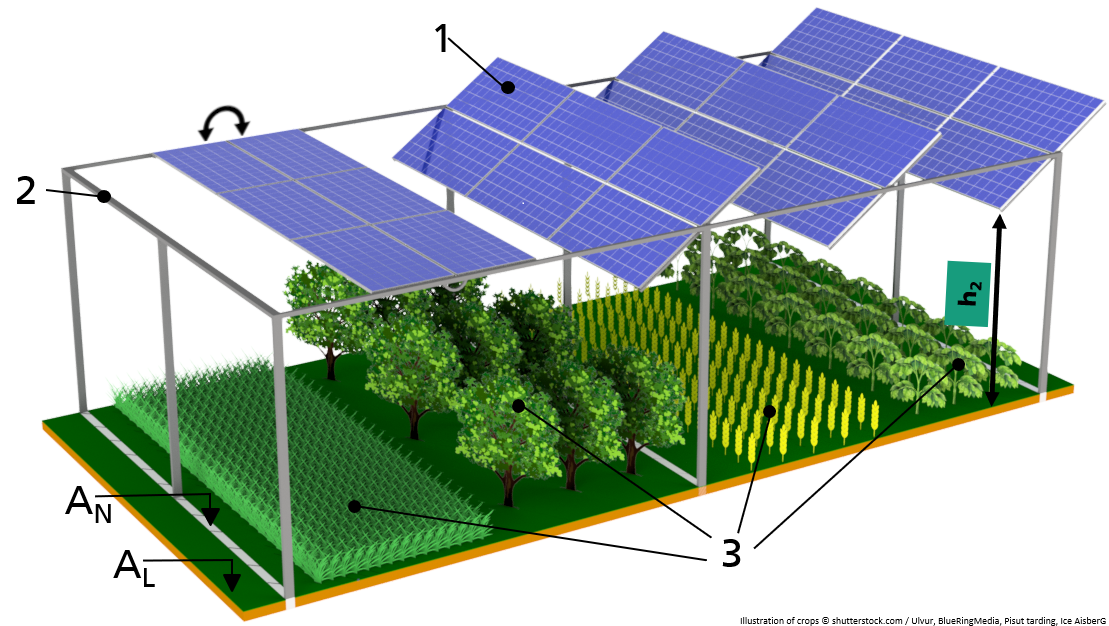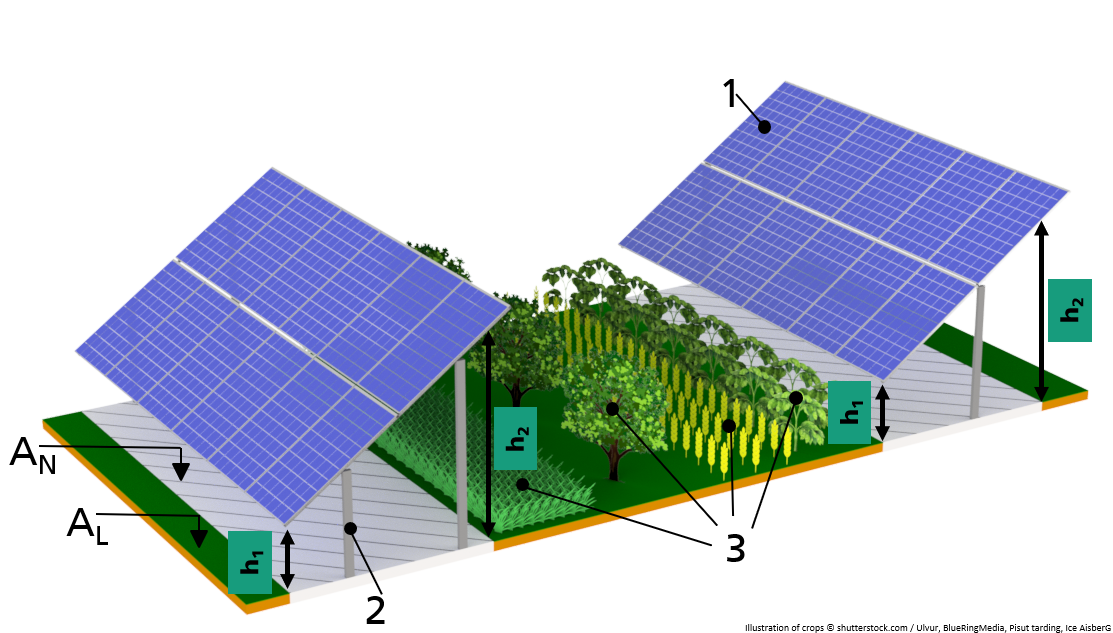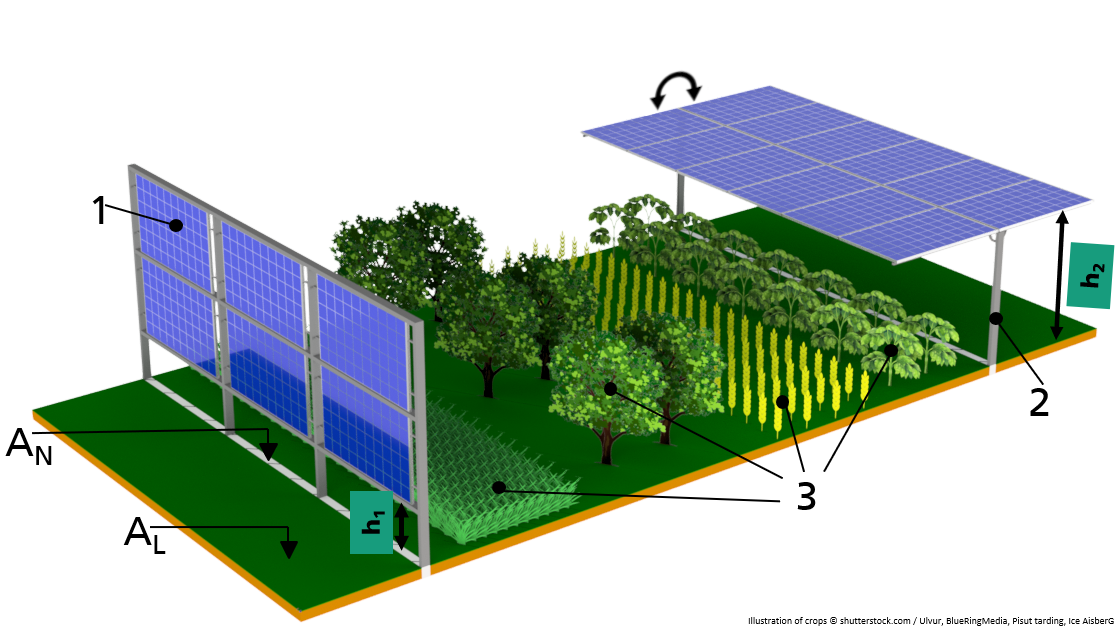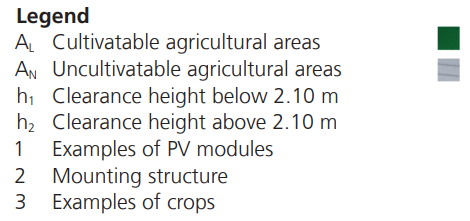Agrivoltaic systems generate electricity in the same way as conventional photovoltaic systems on roofs or open spaces. However, due to the dual use of space, they place additional demands on the technical components of the modules and the mounting of the system. A basic distinction can be made between open and closed systems. Open agrivoltaic systems are subdivided into elevated systems (mounted under modules) and ground-level systems (mounted between modules). Closed systems are used in PV greenhouses.
From an agricultural perspective, module technologies that allow the light spectra necessary for plant growth to pass through are particularly interesting. These include organic photovoltaics, semi-transparent PV module technologies or the use of tracking systems that can actively control the degree of shading through tracking. More targeted light management can also be achieved by narrowing or deviating from a south to an east or west orientation of the PV module position. Another special type of module is bifacial PV modules, which allow solar power to be generated on the front and back of the PV modules, thereby producing higher energy yields than conventional PV modules. The higher and wider the bifacial modules are installed, the more light can reach the rear side.
The partial roofing of the area also changes the distribution of precipitation. To avoid negative drip edges of the PV modules on soil and plants, precipitation must be taken into account in the system design. Measures such as the use of special PV modules (narrow, tubular) or a complete system approach with integrated rainwater harvesting can be used for this purpose.
The substructure must also be adapted to the agricultural use. The anchoring of the substructure into the soil in particular should not have any negative effects on the soil quality. Anchoring methods such as screw and pile foundations can be considered.
One other area of research by Fraunhofer ISE are the technology and sustainability assessments and life cycle analyses for solar cells.









